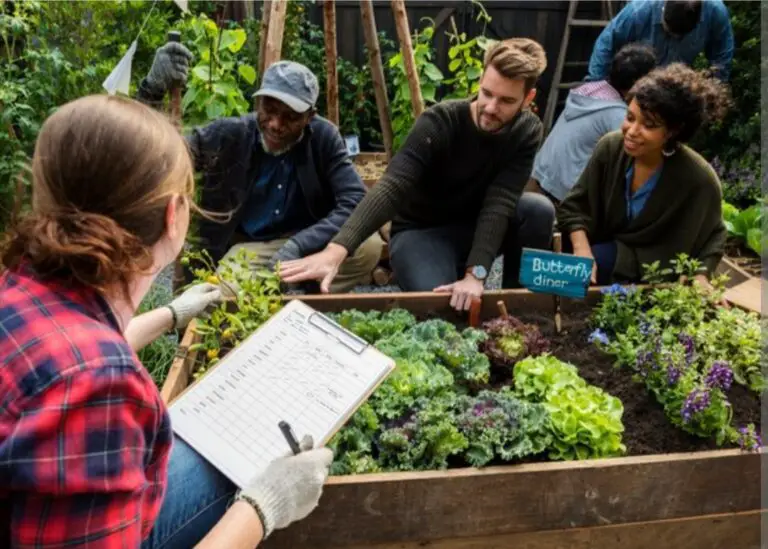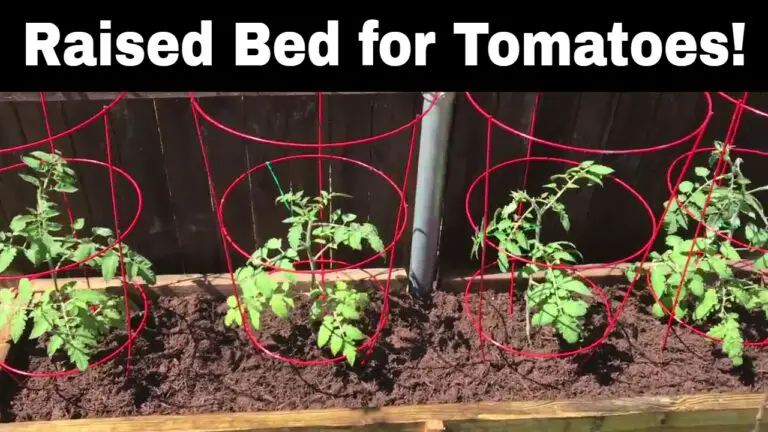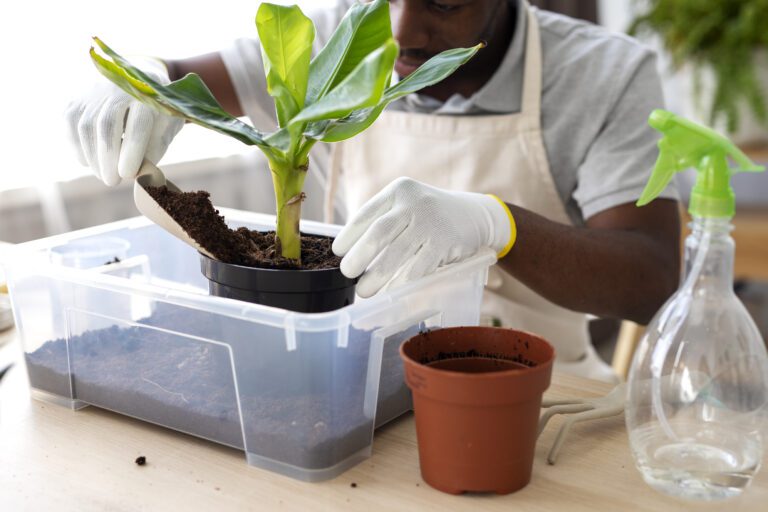Alternative Housing: 30+ Innovative Living Ideas
Alternative Housing: Table of Contents
Alternative Housing of Tiny Houses
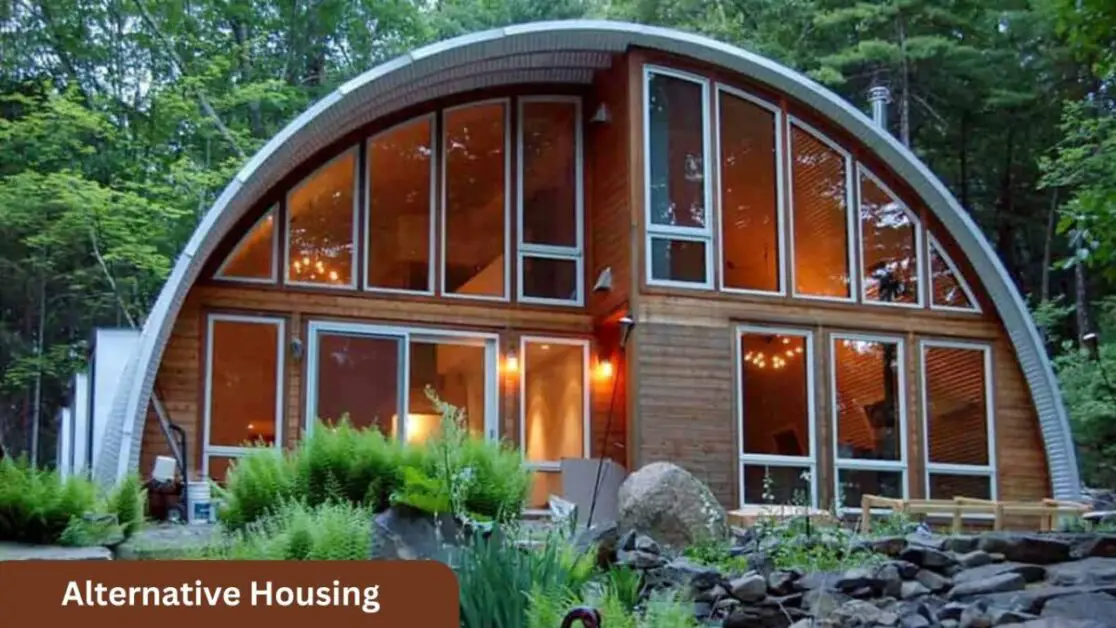
Alternative Housing: Tiny houses are a growing trend in the housing industry, offering a minimalist and sustainable living solution for those looking to downsize or simplify their lives. These compact homes usually range from 100 to 400 square feet, emphasizing efficient use of space and eco-friendly design elements. With the rising costs of traditional housing and the increasing interest in sustainable living practices, tiny houses have gained popularity among individuals seeking a more affordable and environmentally conscious lifestyle.
One of the main appeals of tiny houses is their versatility and adaptability to various living situations. Whether used as primary residences, vacation homes, guest houses, or rental properties, these compact dwellings provide a cost-effective and customizable housing option. Despite their small size, tiny houses can be designed to include all the essential amenities needed for comfortable living, such as kitchenettes, bathrooms, sleeping lofts, and storage solutions. Additionally, their mobility and ability to be placed on wheels or foundations offer flexibility for individuals looking to embrace a more nomadic or off-grid lifestyle.
Alternative Housing: Earthbag Homes
Earthbag homes are a sustainable housing option that have gained popularity in recent years due to their affordability, durability, and eco-friendliness. These structures are built using bags filled with earth or other locally sourced materials, stacked in layers and compacted to create sturdy walls. Earthbag homes are known for their thermal mass, which helps regulate indoor temperatures, making them energy-efficient and cost-effective to heat and cool. Additionally, the construction process of earthbag homes is relatively simple, making them accessible for DIY builders looking to create their own sustainable living space.
One of the key advantages of earthbag homes is their resilience to natural disasters, such as earthquakes, hurricanes, and wildfires. The sturdy earthbag walls are resistant to high winds and can withstand tremors better than traditional wood or concrete structures. This durability makes earthbag homes a popular choice for those living in areas prone to extreme weather conditions or seismic activity. Moreover, the use of natural and locally sourced materials in the construction of earthbag homes minimizes the environmental impact of building, offering a more sustainable and eco-friendly housing solution.
Alternative Housing: Shipping Container Homes
Shipping container homes offer a unique solution to sustainable living, repurposing steel containers into functional and modern dwellings. These homes are not only affordable but also environmentally friendly, as they make use of recycled materials. The versatility of shipping containers allows for creative designs and layouts that can cater to various living needs. From compact tiny homes to spacious multi-level residences, the possibilities are endless when it comes to utilizing shipping containers for housing.
The structural integrity of shipping containers provides durability and strength, making them ideal for withstanding harsh weather conditions. Additionally, their modular nature allows for easy expansion or customization, giving homeowners the flexibility to adapt their living spaces over time. With proper insulation and ventilation, shipping container homes can offer comfortable living environments while reducing energy consumption. Embracing this innovative housing trend can not only support sustainable living practices but also inspire creativity in design and construction methods.
Alternative Housing: Yurts
Yurts have a rich history dating back centuries, originating from the nomadic cultures of Central Asia. These portable and versatile structures embody a harmonious blend of traditional design and modern sustainability practices. The circular shape of yurts allows for efficient airflow and heat distribution, creating a comfortable living environment. With their durable materials and flexible layout, yurts offer a unique housing solution that caters to those seeking a simpler, eco-friendly lifestyle.
The appeal of yurts lies not only in their practicality but also in their aesthetic charm. The cozy and inviting atmosphere of a yurt, coupled with its connection to nature, provides a refreshing escape from the rigors of urban life. Whether used as a permanent residence, a vacation retreat, or a backyard studio, yurts offer a sense of serenity and connection to the natural world. Embracing the principles of sustainability and minimalism, yurts symbolize a return to basics, promoting a more mindful and intentional way of living.
Alternative Housing: Treehouses
Nestled high among the branches, treehouses offer a unique perspective on the world around us. These elevated dwellings blend harmoniously with nature, providing a sense of tranquility and connection to the great outdoors. Whether serving as a whimsical retreat or a sustainable living space, treehouses showcase innovative design and a deep reverence for the environment.
From simple platforms to elaborate structures complete with modern amenities, treehouses cater to diverse preferences and needs. Their versatility extends beyond mere shelter, offering a sanctuary for contemplation, creativity, and relaxation. With a blend of craftsmanship and creativity, treehouses embody the essence of sustainable living, inspiring us to rethink our relationship with the natural world.
Alternative Housing: Van Life
Van Life offers a unique and adventurous way of living on the road, allowing individuals to explore new places and immerse themselves in nature. The compact size of vans provides a cozy living space while promoting a minimalist lifestyle. With clever storage solutions and multifunctional furniture, van dwellers can maximize the use of every inch, creating a comfortable home on wheels.
Living in a van also fosters a strong sense of community among like-minded individuals who share a love for travel and freedom. The flexibility of van life allows for spontaneity in choosing destinations and experiencing the beauty of the outdoors. Whether parked by a serene lake or nestled in a forest, van dwellers embrace simplicity and sustainability, cherishing the journey over material possessions.
Alternative Housing: Converted School Buses
Embarking on a unique journey into the world of alternative living, converted school buses offer a blend of nostalgia and practicality. These mobile homes provide flexibility and freedom to roam while minimizing living expenses. With creativity as the driving force, individuals transform these former transportation units into cozy and personalized living spaces that reflect their individuality and ingenuity.
The metamorphosis of a school bus into a cozy abode involves intricate planning and meticulous execution. From maximizing storage solutions to optimizing living space, the conversion process requires a careful balance of functionality and aesthetics. Embracing the minimalist lifestyle, converted school bus dwellers showcase how simplicity and sustainability can harmonize within the confines of a mobile home.
Alternative Housing: Geodesic Domes
Geodesic domes, with their intricate network of triangular panels, offer a unique blend of strength and efficiency in design. Their spherical shape provides excellent structural integrity, distributing weight evenly and withstanding extreme weather conditions admirably. This innovative architectural style, popularized by Buckminster Fuller, has found a niche in various applications, from eco-friendly homes to geodesic greenhouse structures.
The geometric precision of geodesic domes not only lends them a futuristic appeal but also contributes to their energy efficiency. The spherical shape allows for optimal airflow and natural light distribution, reducing the need for artificial heating or lighting. Furthermore, their versatility allows for easy customization in size and layout, making them adaptable to different purposes and environments. Whether used as a residential dwelling, a communal gathering space, or a greenhouse for agricultural pursuits, geodesic domes symbolize the harmonious fusion of aesthetics and functionality.
Alternative Housing: Cob Houses
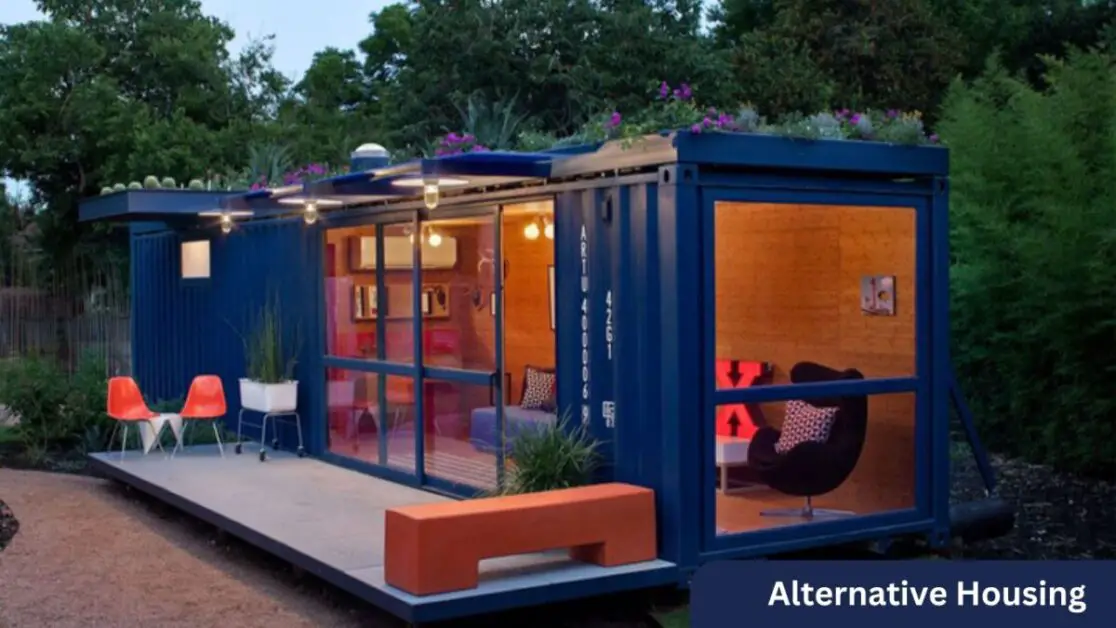
Cob houses, also known as cob cottages, are traditional structures made from a mixture of clay, sand, straw, and water. This natural building material is not only sustainable but also offers excellent thermal mass properties, keeping the interiors cool in hot climates and warm in cold weather. The thick walls of cob houses are durable and resistant to fire, making them a long-lasting and eco-friendly housing option.
The construction of cob houses involves forming the mixture into solid walls, often by hand, resulting in curved, organic shapes that blend harmoniously with the natural environment. Additionally, cob houses can be built at a lower cost compared to conventional homes, as the materials used are readily available and often sourced locally. The unique charm and character of cob houses appeal to those seeking a simple, natural lifestyle in a cozy and inviting space.
Alternative Housing: Floating Homes
Floating homes offer a unique living experience, combining the tranquility of waterfront living with the flexibility of a home that moves with the water. These innovative homes are designed to provide a sustainable and eco-friendly way of living, with many incorporating green technologies such as solar panels and water recycling systems. Floating homes come in various designs, from sleek modern structures to charming traditional houseboats, catering to different tastes and preferences.
Living on a floating home allows residents to be in close contact with nature, with stunning views of the water and easy access to outdoor activities like kayaking and fishing. Additionally, the sense of community among floating home dwellers is strong, creating a tight-knit neighborhood where neighbors often come together for social gatherings and events. Whether it’s a permanent residence or a vacation getaway, floating homes offer a truly unique way of living that appeals to those seeking a harmonious blend of nature and modern comforts.
Alternative Housing: Straw Bale Homes
Straw bale homes have gained popularity in recent years due to their eco-friendly nature and energy-efficient properties. These structures utilize straw bales as a building material, providing excellent insulation and reducing the environmental footprint of the construction process. The thick walls of straw bale homes help maintain comfortable indoor temperatures throughout the year, leading to lower energy costs for heating and cooling.
Moreover, straw bale homes offer a unique aesthetic appeal, blending harmoniously with natural surroundings and showcasing a rustic charm. The versatility of this building method allows for creative architectural designs and customizable features, making each straw bale home a unique and personalized space for its inhabitants. In addition to their sustainability and visual appeal, straw bale homes have been shown to have excellent durability and resilience, standing the test of time with proper maintenance and care.
Alternative Housing: Hobbit Houses
Imagine living in a cozy, earth-sheltered abode that blends harmoniously with its natural surroundings. Hobbit Houses, inspired by J.R.R. Tolkien’s fantastical world, offer a unique living experience unlike any other. These whimsical dwellings often feature rounded doorways, turf roofs, and earthy tones, creating a sense of enchantment for their inhabitants.
Embracing sustainable living practices, Hobbit Houses are designed to minimize their environmental impact. By utilizing natural materials and incorporating energy-efficient features, these homes offer a blend of functionality and charm. Whether nestled into a hillside or surrounded by lush gardens, Hobbit Houses provide a retreat from the hustle and bustle of modern life, allowing residents to reconnect with nature in a truly magical way.
Alternative Housing: Earth ships
A testament to sustainable living, Earthships are innovative, off-grid homes constructed from recycled materials like tires, cans, and bottles. These eco-friendly dwellings utilize passive solar design, thermal mass, and natural ventilation to minimize energy consumption and reduce environmental impact. With features like rainwater harvesting systems, greywater recycling, and solar panels, Earthships exemplify self-sufficiency and resilience in the face of climate challenges.
Earthships blend cutting-edge technology with ancient wisdom, offering a harmonious way of living in sync with nature. These self-contained ecosystems showcase the ingenuity of human creativity and our ability to thrive within the bounds of ecological balance. By embracing Earthship principles of sustainability, individuals can not only reduce their carbon footprint but also foster a deep connection to the Earth and cultivate a more conscious way of life.
Alternative Housing Tent Living
When it comes to living closer to nature, there’s a unique allure in the simplicity and versatility of tent living. Tents offer a temporary escape from the hustle and bustle of daily life, allowing individuals to immerse themselves in the great outdoors. Whether pitched in the mountains, by the beach, or in a forest, tents provide a cozy shelter that resonates with the raw essence of nature. The sound of raindrops on the canvas, the gentle rustling of leaves in the wind, and the soft glow of a campfire under a starlit sky – all contribute to a rich tapestry of experiences that tent dwellers cherish.
Tent living encourages a minimalist lifestyle, prompting inhabitants to prioritize essentials and cherish the simplicity of their surroundings. With limited space and resources, individuals learn to appreciate the small joys of life and find contentment in the basic necessities. The portability of tents also offers the freedom to explore new environments and immerse oneself in different landscapes. From solo backpacking adventures to communal camping trips, tent living fosters a sense of connection with nature and a deeper appreciation for the beauty of the natural world.
Houseboats
Houseboats offer a unique and adventurous living experience, combining the comfort of a home with the tranquility of living on water. These floating dwellings come in various sizes and styles, from cozy cabins to luxurious modern designs. With stunning views of the water and the ability to move to different locations, houseboat living appeals to those seeking a more unconventional lifestyle.
Living on a houseboat allows residents to be in close proximity to nature, enjoying the peacefulness of the water while having the convenience of modern amenities. Whether docked at a marina or cruising along a river or lake, houseboats provide a sense of freedom and connection to the outdoors that is hard to replicate in traditional land-based homes. The innovative designs and sustainable features of many houseboats also attract environmentally conscious individuals looking for a more eco-friendly way of living.
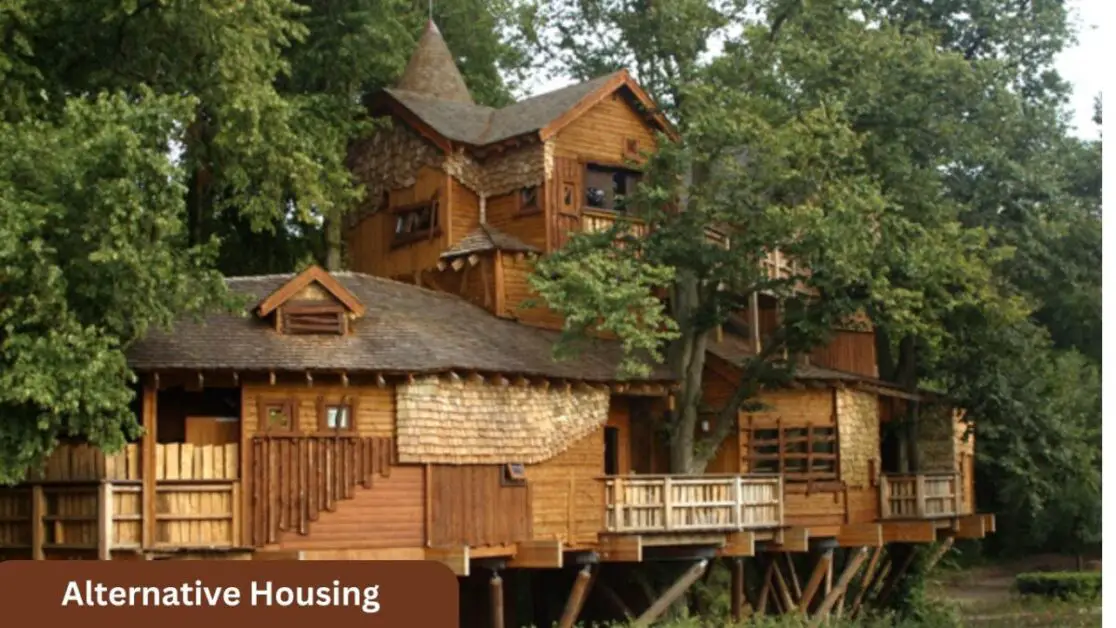
here’s a table showcasing 30+ innovative living ideas for alternative housing:
| No. | Housing Idea | Description |
|---|---|---|
| 1 | Tiny House | Small, often portable homes typically ranging from 100 to 400 square feet in size. |
| 2 | Earthship | Sustainable homes constructed from recycled materials like tires, cans, and bottles, often featuring passive solar design. |
| 3 | Shipping Container Homes | Dwellings made from repurposed shipping containers, offering a modern aesthetic and durability. |
| 4 | Yurts | Traditional circular tents used by nomadic cultures, now adapted for modern living with insulation and amenities. |
| 5 | Treehouses | Elevated dwellings built within the branches of trees, providing unique and environmentally friendly living spaces. |
| 6 | Cob Houses | Homes constructed from a mixture of clay, sand, straw, and water, offering natural insulation and a rustic appearance. |
| 7 | Geodesic Domes | Spherical structures made of interconnected triangles, providing strength and efficient use of space. |
| 8 | Houseboats | Floating homes designed to be lived in on water bodies such as rivers, lakes, or oceans. |
| 9 | Straw Bale Houses | Buildings constructed using bales of straw as structural elements, offering excellent insulation properties. |
| 10 | Underground Homes | Dwellings built partially or entirely underground, providing natural insulation and energy efficiency. |
| 11 | Hempcrete Houses | Homes constructed using a mixture of hemp fibers, lime, and water, offering sustainability and durability. |
| 12 | Van Life | Lifestyle involving living in converted vans or recreational vehicles (RVs) to achieve mobility and freedom. |
| 13 | Floating Villages | Communities built on floating platforms or artificial islands, adapting to rising water levels and floods. |
| 14 | Earthbag Construction | Structures built using polypropylene bags filled with earth or other natural materials, providing stability and low cost. |
| 15 | Converted Barns | Renovated agricultural buildings transformed into unique living spaces, often featuring open layouts and high ceilings. |
| 16 | House on Wheels (THOW) | Mobile homes mounted on trailers, allowing for easy relocation and flexibility in living arrangements. |
| 17 | Airstream Trailers | Iconic aluminum trailers converted into stylish and compact living spaces, suitable for travel and off-grid living. |
| 18 | Skoolies | School buses converted into homes, offering spacious interiors and the ability to travel while maintaining comfort. |
| 19 | Tumbleweed Houses | Small, mobile homes designed to be towed by a vehicle, providing minimalist living solutions. |
| 20 | Prefabricated Modular Homes | Houses constructed from factory-built modules, allowing for quick assembly on-site and customizable designs. |
| 21 | Eco-Villages | Sustainable communities designed to promote ecological living, featuring shared resources and green technologies. |
| 22 | Co-Housing Communities | Collaborative living arrangements where residents share common spaces and resources while maintaining individual units. |
| 23 | Capsule Hotels | Compact accommodations featuring small pods for sleeping, often used in urban settings and for short stays. |
| 24 | Camper Vans | Compact vans converted into living spaces for travel and exploration, offering mobility and basic amenities. |
| 25 | Dome Houses | Curved structures made of reinforced concrete or fiberglass, offering energy efficiency and resistance to natural disasters. |
| 26 | Cordwood Construction | Building technique utilizing logs or pieces of wood stacked horizontally with mortar or cob, providing thermal mass. |
| 27 | Houseboats | Floating dwellings designed to be lived in on water bodies, offering unique waterfront living experiences. |
| 28 | Hexayurts | Low-cost, easy-to-assemble shelters made from panels of insulation board or other materials, suitable for emergency housing. |
| 29 | Rammed Earth Homes | Houses constructed by compacting layers of earth inside temporary formwork, offering thermal mass and durability. |
| 30 | Container Cities | Urban developments built using repurposed shipping containers, providing affordable housing solutions. |
| 31 | Micro-Apartments | Small living spaces typically ranging from 100 to 400 square feet, designed to maximize functionality and minimize cost. |
These alternative housing options offer diverse solutions for various needs, whether it’s sustainability, mobility, affordability, or unique living experiences.
What are some advantages of living on a houseboat?
Living on a houseboat allows you to have a unique waterfront living experience, enjoy stunning views, and feel connected to nature. It also offers a sense of freedom and mobility, as you can easily move your home to different locations.
Are houseboats difficult to maintain?
Houseboats require regular maintenance just like any other home, but the specific maintenance tasks may vary due to their unique nature. Regular inspections of the hull, electrical systems, and plumbing are important to ensure the safety and functionality of the houseboat.
Can houseboats be energy efficient?
Yes, houseboats can be designed to be energy efficient by incorporating renewable energy sources such as solar panels, wind turbines, and energy-efficient appliances. Some houseboats may also utilize innovative technologies to reduce energy consumption and environmental impact.
How do you handle waste disposal on a houseboat?
Waste disposal on a houseboat can vary depending on the location and regulations. Some houseboats may be equipped with holding tanks for sewage disposal, while others may have access to pump-out facilities at marinas. It is important to follow proper waste disposal practices to protect the environment.
Are houseboats a good investment?
Investing in a houseboat can be a unique and rewarding experience, but it is important to consider factors such as maintenance costs, mooring fees, and resale value. Researching the market, consulting with experts, and thoroughly inspecting the houseboat before purchase can help you make an informed decision.



